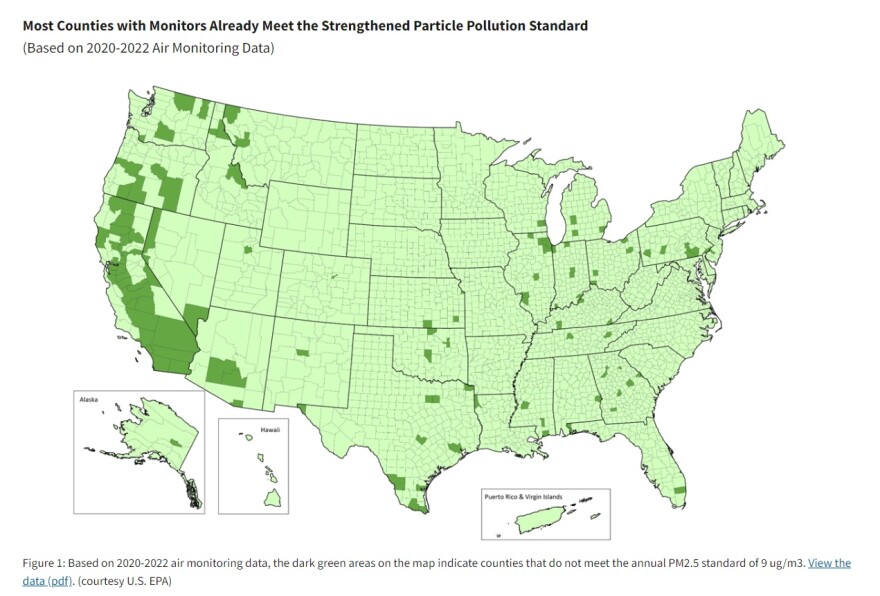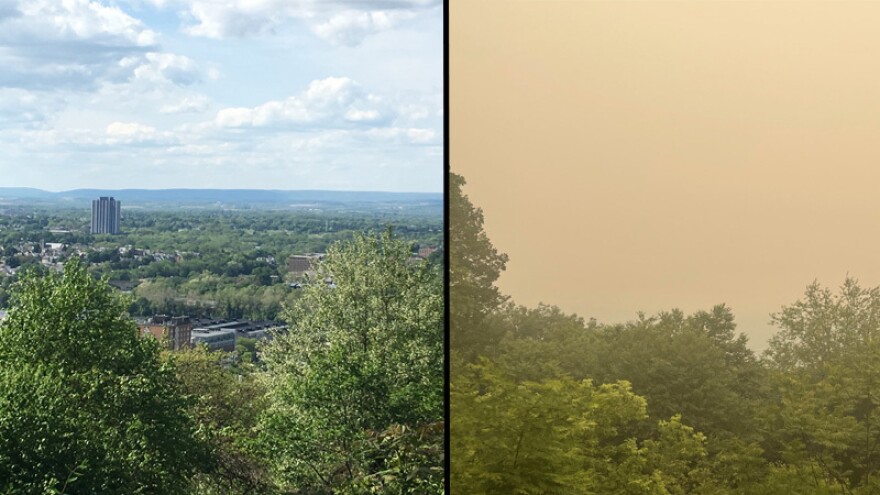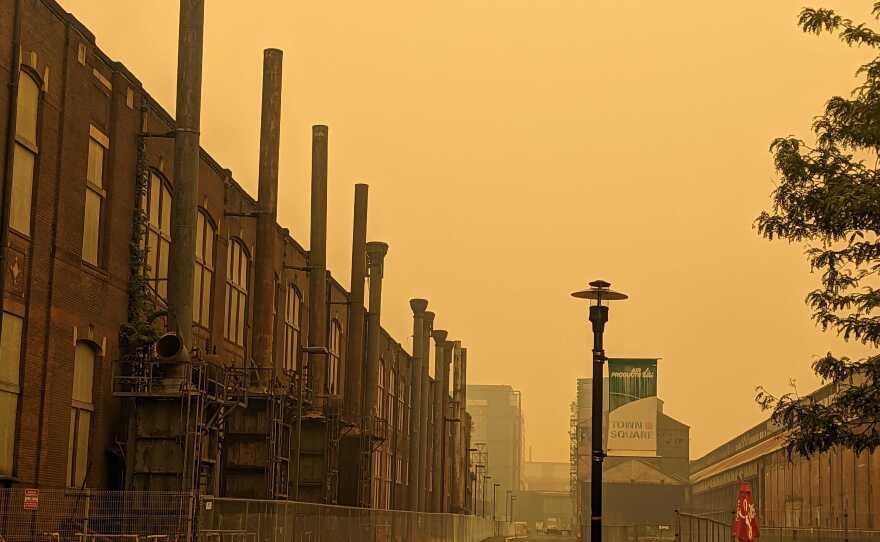BETHLEHEM, Pa. — On hazy days, it’s easy to tell that there’s pollution in the Lehigh Valley’s air.
But it’s the invisible, fine particle pollution that is the most dangerous to public health.
“Those tiny particles — you can't see them, but they're the ones that can move across the blood vessels in your lungs and circulate throughout your whole body,” said Chrysan Cronin, associate professor and director of public health at Muhlenberg College. “Some smoke particles are so big that they can't make it that far down into your lungs.
“But the ones that you can't see are the ones that cause the problems. That's why we're so worried about PM 2.5.”
The U.S. Environmental Protection Agency early last month finalized new, stronger standards for fine particle pollution, also called soot or PM 2.5, nationwide. Advocates and officials across Pennsylvania have supported the move, citing the right to clean air for all residents, as well as the environmental and financial benefits.
However, federal officials don’t anticipate communities will meet the standard for almost a decade, leaving researchers to wonder if they go far enough, as well as how, when or if they will be enforced.
“Clean air is a right, not a privilege — and today’s announcement by Biden’s EPA makes a critical step toward delivering cleaner air for millions of Americans,” said Zachary Barber, Clean Air Advocate with the PennEnvironment Research & Policy Center. “Taking soot pollution out of our air will save lives and help kids with asthma breathe more easily, especially in places like Pennsylvania that regularly suffer from elevated soot levels.”
New standards
Federal officials on Feb. 7 announced new air quality standards, dropping the acceptable level of PM 2.5 in the air from 12 micrograms per cubic meter to nine.
“Micrograms per cubic meter means that's how many micrograms of PM 2.5 is in a cubic meter of air,” Cronin explained. “When we measure pollutants in air, we usually do it in cubic meters of air, which is meaningless to most people.
“But imagine a cubic box that's a meter by a meter by a meter. How many particles are in that enclosed cube? It's not safe, but it's better than 12.”
The World Health Organization’s current guidelines show the annual average concentrations of PM 2.5 should not exceed 5 micrograms per cubic meter.
Residents might be more familiar with the Air Quality Index, or AQI, which is how the EPA measures air quality. AQI takes other pollutants into consideration in addition to PM 2.5.
The new soot standards will prevent up to 4,500 premature deaths and 290,000 lost workdays, yielding up to $46 billion in net health benefits in 2032, the first year states would need to meet the revised standards, officials said in a news release.
Cleaner air means that our children have brighter futures, and people can live more productive and active lives, improving our ability to grow and develop as a nation.EPA Administrator Michael S. Regan
“This final air quality standard will save lives and make all people healthier, especially within America’s most vulnerable and overburdened communities,” said EPA Administrator Michael S. Regan. “Cleaner air means that our children have brighter futures, and people can live more productive and active lives, improving our ability to grow and develop as a nation.
“EPA looks forward to continuing our decades of success in working with states, counties, Tribes, and industry to ensure this critical health standard is implemented effectively to improve the long-term health and productivity of our nation.”

The vast majority — 99%, according to the EPA — of counties across the country are expected to meet the new standards in 2032, “likely the earliest year that states would need to meet the revised standard.”
However, there’s little information available about how officials will handle enforcing the new rules, especially during a year with a contentious presidential election.
“I'm not sure when it will be enforced, how it will be enforced or even if it will be enforced,” Cronin said.
Soot in the Lehigh Valley
It’s no secret that the Valley’s air can be unhealthy, with emissions from prolific truck and car traffic and industrial polluters often stuck in the region, named for its location in the trough between South Mountain and Blue Mountain.
The impacts of climate change, as well as continued emissions, are making matters worse.
Smoke from Canadian wildfires last year gave the region some of the worst air quality in the nation. The month prior, two Northampton County industrial facilities were included on a ranking of Pennsylvania’s top climate polluters.
In August, leaders from both Lehigh and Northampton counties launched a year-long, $100,000 project to measure air quality amid emissions from trucking and warehousing. So far, officials have released preliminary findings that show fine particle pollution in the region is highest near warehouses and highways. In September, Allentown was named the asthma capital of the U.S. by the Asthma and Allergy Foundation of America, climbing from third place the year prior.
Last week, Bethlehem officials and advocates held a news conference signaling their support and urging federal officials for strict emission standards for trucks manufactured for years 2027 and later, currently under consideration by the EPA and expected to be adopted this month.
There are currently two air quality monitors in the Valley, in Freemansburg and East Allentown, that the state Department of Environmental Protection uses to make sure that the region complies with the federal Clean Air Act. The EPA’s website includes an interactive map of air quality monitors nationwide.
















